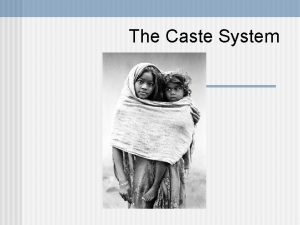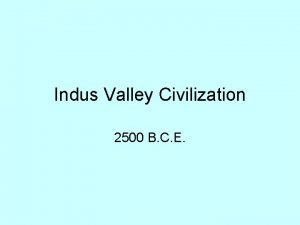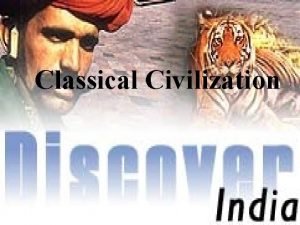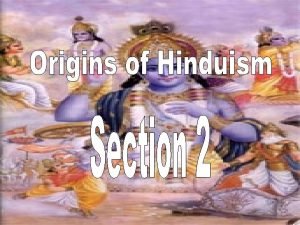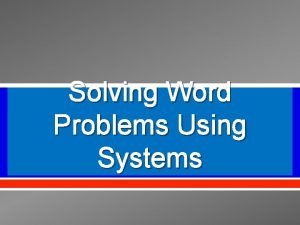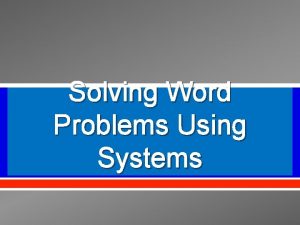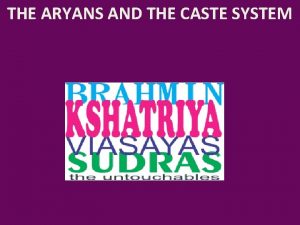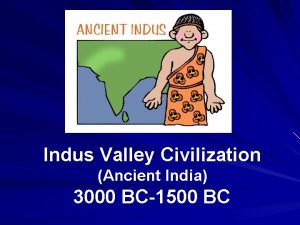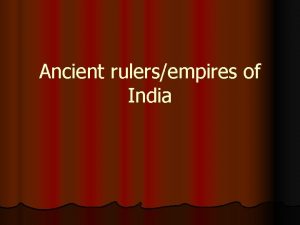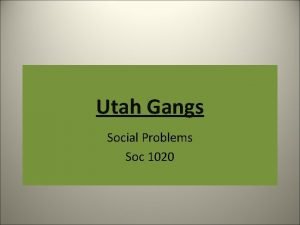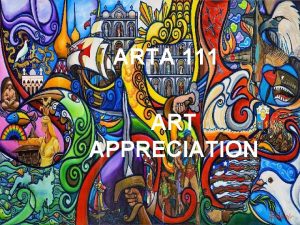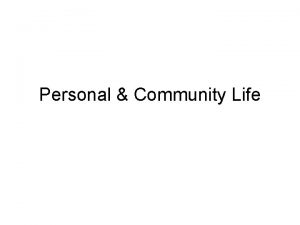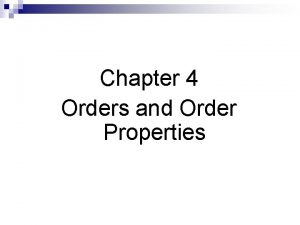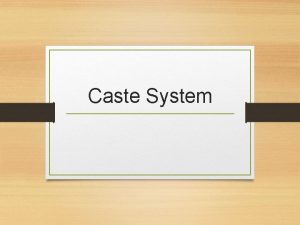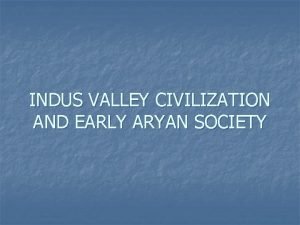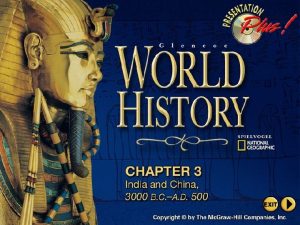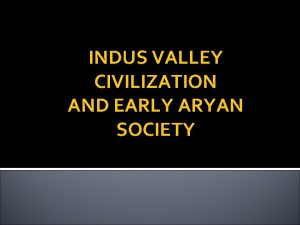Varnas are social orders in Aryan society There

















- Slides: 17


Varnas are social orders in Aryan society There were four

Brahmins Vaisyas Kshatriyas Sudras

Brahmins • This was the highest ranking class • They had great influence over the other varnas

Kshatriyas • These were the rulers and warriors • The second highest of the varnas

Vaisyas • The Vaisyas were the middle class • Farmers, craftspeople, and traders

Sudras • Sudras were the lower class • They were workers and servants

• In time, each of the four varnas were further divided into castes • Castes are groups based on birth, wealth, occupation • At one time, over 3, 000 castes • Rarely, people could change caste

• Sutras, or guides, listed all the rules of the caste system • Could not marry anyone of a different caste • Breaking the rules could make one an “untouchable”

• Aryan priests were called “Brahmans, ” therefore the religion is called Brahmanism • Aryan religion is based on the Vedas • There are four Vedas

• Rigveda is the oldest, written before 1000 B. C. • Vedic texts came later, describing various rituals • The Upanishads were written in 600 s B. C.

• Ideas from Persia and central Asia eventually blended with the Aryan beliefs • This blending created Hinduism • It’s the largest religion in India today

Three major gods: Brahma the Creator Siva the Destroyer Vishnu the Preserver

• Atman is the soul • Ultimate goal is to reunite the soul with Brahman • This can take several lifetimes • The process is called reincarnation

• Karma, the effects of good or bad actions on a person’s soul • Bad karma led to a lower caste • Good karma led to a higher caste and salvation (moksha) • Dharma = duty to accept one’s place in society

Based on the teachings of Mahavira, a Kshatriya, born 599 BC Four principles: Injure no life Do not steal Tell the truth Own no property

• Sanskrit word ahimsa • Based on the belief that everything is alive and part of the cycle of rebirth • They don’t eat any food that comes from animals (vegetarians)
 Insidan region jh
Insidan region jh Kshatriya caste
Kshatriya caste Brahman
Brahman Aryan society
Aryan society Aryan society
Aryan society Shudras meaning
Shudras meaning Casey orders 3 pizzas
Casey orders 3 pizzas Casey orders 3 pizzas
Casey orders 3 pizzas Casey orders 3 pizzas and 2 orders of breadsticks
Casey orders 3 pizzas and 2 orders of breadsticks Where did hinduism originate
Where did hinduism originate The aryan caste system
The aryan caste system Religious beliefs of indus valley civilization
Religious beliefs of indus valley civilization Aryan dynasty
Aryan dynasty Aryan religion
Aryan religion Aryan mazloum
Aryan mazloum The aryan caste system
The aryan caste system Tracy david swena now
Tracy david swena now Auditory arts examples
Auditory arts examples


